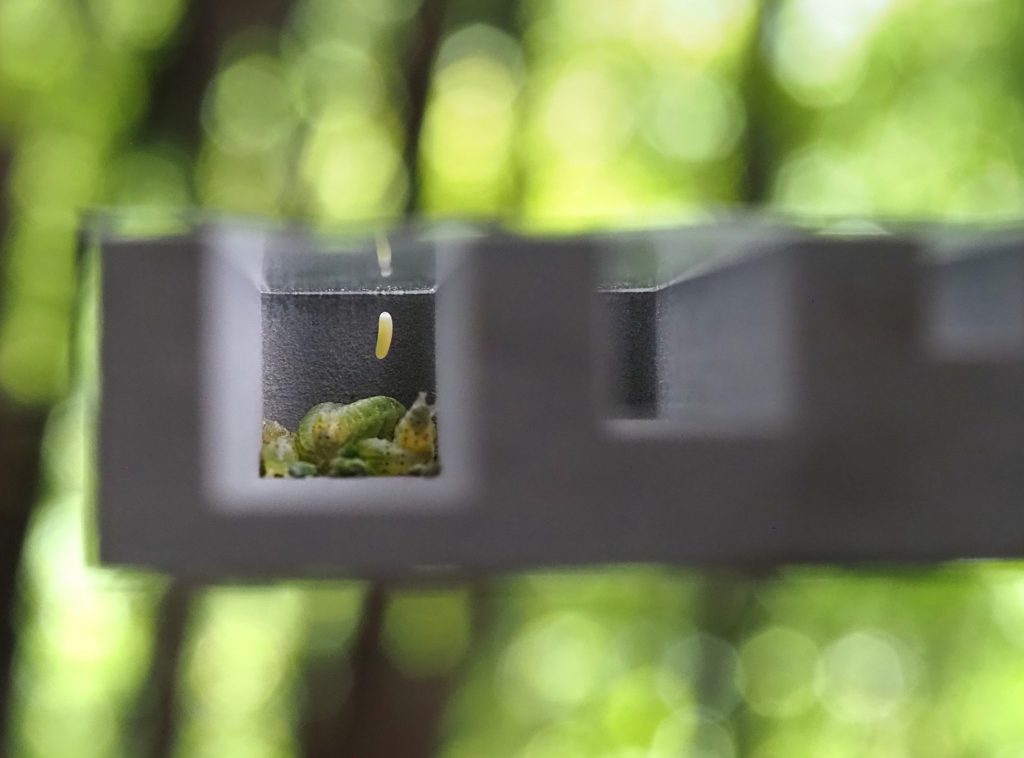MultiTroph is a multi-disciplinary project funded by the German Research Foundation (DFG) that started in October 2022 and will end in September 2026. The overall objective of MultiTroph is to identify mechanisms underlying the relationships of biodiversity with ecosystem functions across trophic levels. Our goal is to quantify species interactions between primary producers and different trophic and functional groups of consumers and ultimately connect the different interaction types to large food webs to increase our understanding of how, why and when ecosystem functions are destabilised with species loss.



Biodiversity-ecosystem functioning (BEF) research demonstrated the importance of biodiverse communities for promoting ecosystem functions such as biomass production, carbon sequestration, herbivory and predation. Likewise, plant diversity increases ecosystem stability but little is known on how tree diversity structures complex trophic interaction networks associated with plants. To understand how tree diversity is linked to biomass production, element cycling and species conservation, the DFG has initiated, with the Research Unit FOR 891, the largest forest biodiversity experiment worldwide located in subtropical China and thereby established the BEF-China research platform.



Our multi-disciplinary Research Unit MultiTroph (Multi-Trophic Interactions in a Forest Biodiversity Experiment in China) uses the unique opportunity of the BEF-China Experiment to identify mechanisms underlying the relationships between biodiversity and ecosystem functions across multi-trophic levels. We aim to quantify species interactions of different trophic and functional groups of consumers with trees along an experimental tree diversity gradient to ultimately connect the different interaction types to large food webs.
The interactions studied within MultiTroph focus on functional redundancy and complementarity identified via specific interaction modules including key trophic levels. Our guiding principle is the expectation that quantitative trophic interaction networks will help to identify niche overlaps within interactions in generalised/redundant communities with overlapping niches in tree species-rich habitats. This will be compared to specialised/complementary communities with separated niches in species-poor habitats.



In six subprojects (SP) we are investigating different questions on multitrophic interactions. SP1 deals with wood decomposition and interactions of decomposers, SP2 explores soil-plant interactions and SP3 deals with food webs between plants and arthropods. SP4 looks at multitrophic interactions of cavity-nesting Hymenoptera, SP5 deals with trophic interactions at different stages of tree regeneration, and SP6 looks at trophic interactions of ants. The MultiTroph team consists of 22 researchers from German and Austrian Universities, 10 Chinese partners from the Chinese Academy of Sciences, a partner from the Stuttgart Museum of Natural History and a Mercator Fellow from Pennsylvania State University.
Designated spokesperson:
Alexandra-Maria Klein
University of Freiburg
Chair of Nature Conservation and Landscape Ecology
Chinese coordinator:
Chao-Dong Zhu
Institute of Zoology
Chinese Academy of Sciences Beijing
Project coordinator:
Finn Rehling
University of Freiburg
Chair of Nature Conservation and Landscape Ecology

